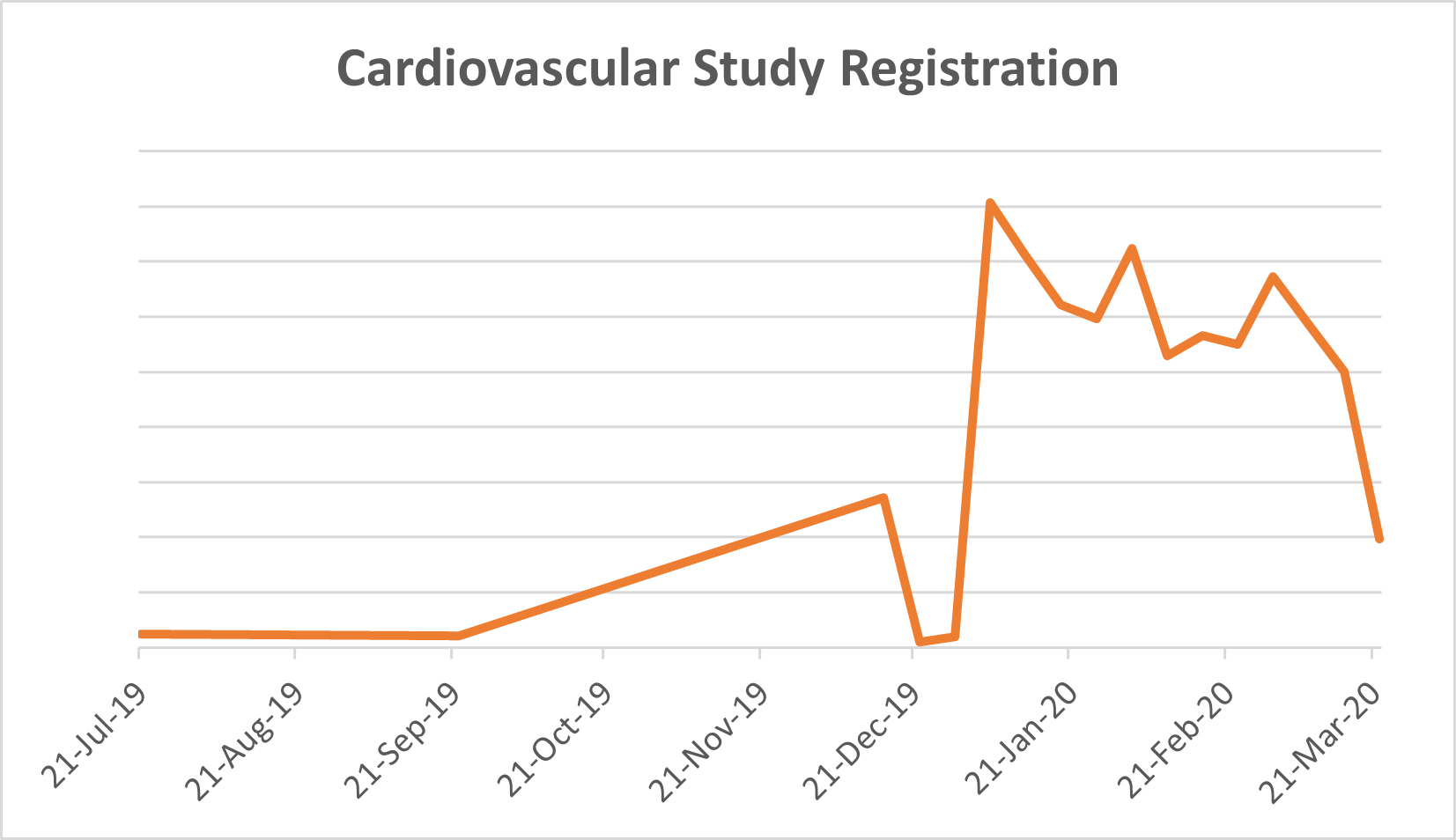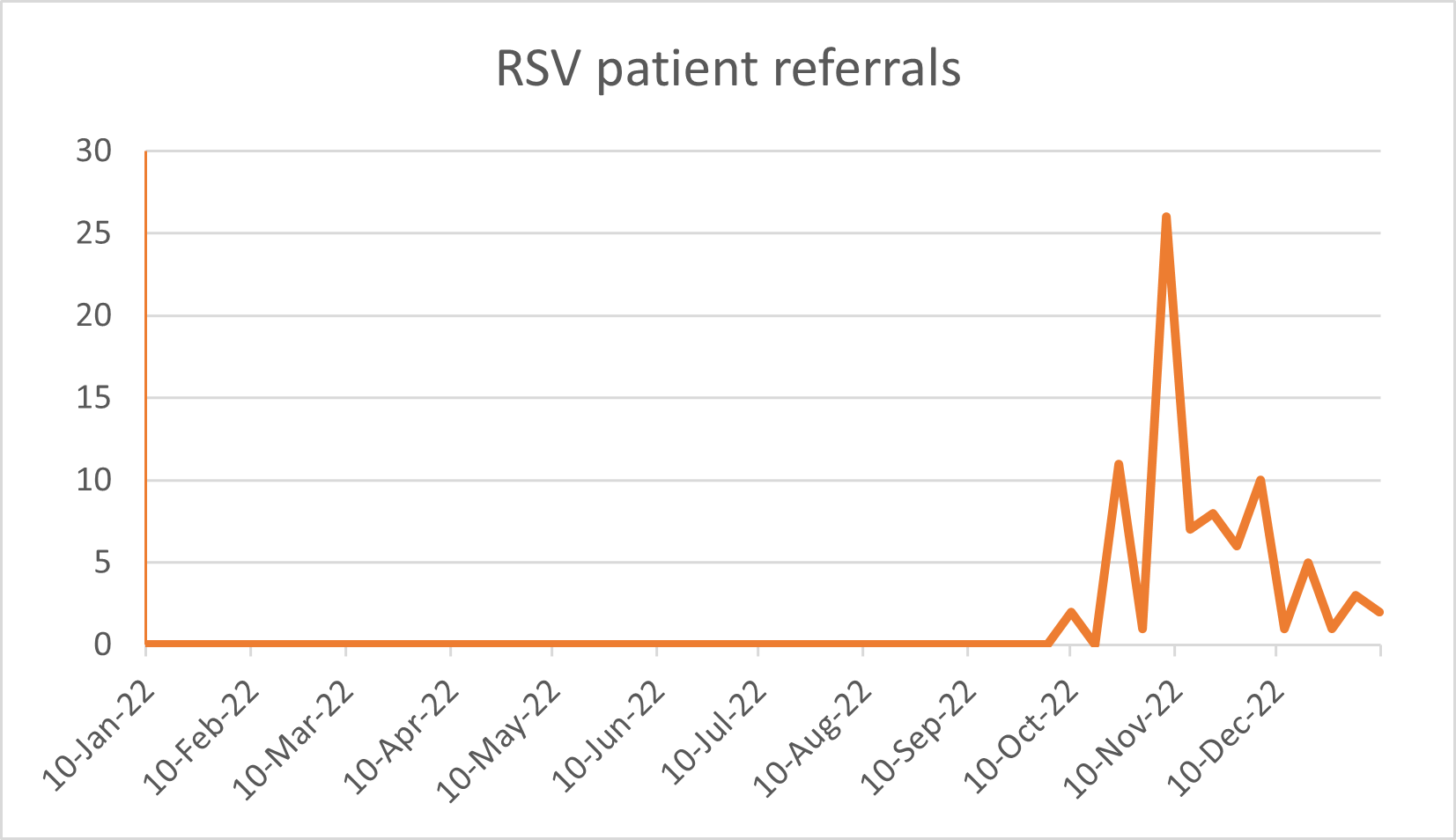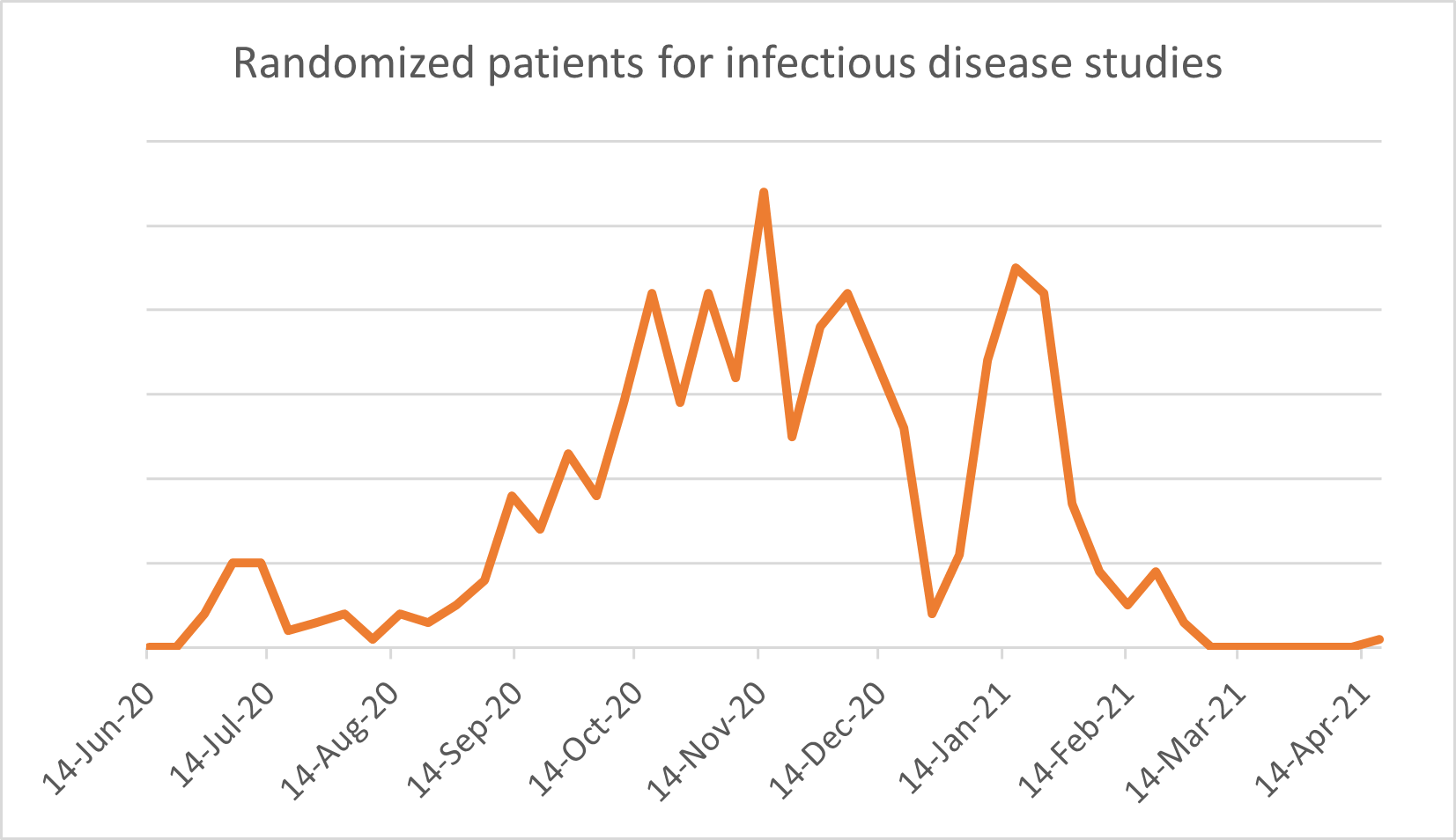In this blog, we explore how seasonality or yearly repetitive patterns impacts 4 indications and their implications for clinical trials. Studies have shown that patient recruitment and enrollment rates for several indications, spike during the winter season. Trial organizers that are looking to enroll patients at the optimal time, should consider planning their recruitment now to catch the winter wave of patient traffic.
From looking at our own patient recruitment data, we have identified seasonal patterns that occur for four specific indications:
- Cardiovascular disease
- Depression
- Infectious disease (RSV)
- Respiratory diseases (COPD and asthma)
1. Cardiovascular disease
Some studies suggest that seasonality can have a significant impact on cardiovascular disease.
Top cardiologists and several studies have revealed that this happens due to the body’s physiology. The temperature drop can impact the heart’s functionality and may be potential vascular changes that can cause clots to form and cause the heart to fail. Some heart related diseases increase between 14 and 20% in winter.
What does that mean for patient recruitment?
Based on Clariness patient recruitment data, the following graph illustrates the enrollment trends of patients participating in cardiovascular disease clinical trials from 2019 to 2020.

As illustrated in the graph, there is a substantial surge in patient registrations within cardiovascular studies from January to March. These peaks vividly portray the notable uptick in the number of patients registering for trials.
For cardiovascular diseases recruitment campaigns ran during the winter period, we saw:
- A strong online advertising response: 2 million visits to study pages
- Double the number of patients screened
At Clariness, we have successfully supported 70+ cardiovascular studies in different regions, from Phase I to IV.
2. Depression
Seasonal Affective Disorder (SAD), commonly known as “winter blues,” affects people during cold winter days. Studies reveal that approximately 90% of individuals experience changes in energy, mood, sleep, and appetite in winter.
Around 5% of the population experiences SAD each year, with up to 20% experiencing milder symptoms. While it’s most common in January and February, some people can suffer from it up to 40% of the year.
For individuals that suffer with depression, the winter months can be significantly worse for many, driving them to seek treatment and participate in clinical trials for a chance of improving their lives. Using clear language and providing understandable information, alongside highlighting the potential benefits of these studies, can boost participation in clinical trials.
Our experience
Our approach has covered 40+ marketing channels to target the right population and our online campaigns for depressions studies have shown to raise patient’s interests.
Clariness has successfully supported 10 major depressive disorder studies from phase I-IV and has run surveys to get meaningful insights from patients themselves.
3. Infectious diseases
While the seasonal surge in cold and flu viruses is widely accepted and acknowledged, some medical articles have highlighted that the flu virus reaches its peak during the winter months. Experts believe that one possible explanation is that the virus tend to thrive in dry and cold environments. Furthermore, the gathering of people during the holiday season contributes to the heightened spread.
Our experience
Clariness has supported several infectious disease related studies including Respiratory Syncytial Virus (RSV) and Influenza.
The graph below shows how throughout the month of November, the patient referrals for the respiratory syncytial virus and RSV significantly increased. Demonstrating an excellent window of opportunity for patient recruitment during the winter season.

Furthermore, the following graph shows the increase of patient randomization in various infectious indication studies during the winter period, with the majority being randomized from mid-October to December and then increasing again in February.

4. Respiratory diseases
During wintertime, the cold temperatures and dry air are factors that can make it harder for people to breathe, especially for individuals with pre-existing respiratory conditions.
According to studies, many COPD sufferers find that their symptoms are exacerbated during colder weather.
Our experience
Clariness has supported 68 studies related to respiratory conditions, including asthma, COPD and Bronchitis.
The following graph illustrates the landing page visits for asthma, COPD and Bronchitis.

Interest in respiratory studies experienced notable surges in both November and January. Therefore, it is imperative to strategically plan patient recruitment during these months for optimal results and enrollment rates.
Conclusion
With Clariness, achieving your target objectives becomes attainable, thanks to our expertise and insights in patient recruitment tailored to seasonal trends. It is not too late to catch the winter wave of traffic and recruit your target population for these indications and help your study numbers increase and meet your enrollment goals.
About Clariness
Clariness provides local expertise and acknowledges the strategies to implement for each individual study. We make sure to boost your recruitment efforts by providing insightful data based on multiple indications throughout different seasons of the year and preventing missing the opportunity to recruit the right patients based on seasonality.
At Clariness we have 18+ years of experience working across multiple indications including these ones and many others. We have gathered knowledge alongside experts, multiple sites and sponsors.
We have worked on over 100+ indications and supported more than 1,200 studies clinical trials worldwide. At Clariness we have gained important insights on seasonality and how to make a positive impact on study feasibility and patient recruitment.